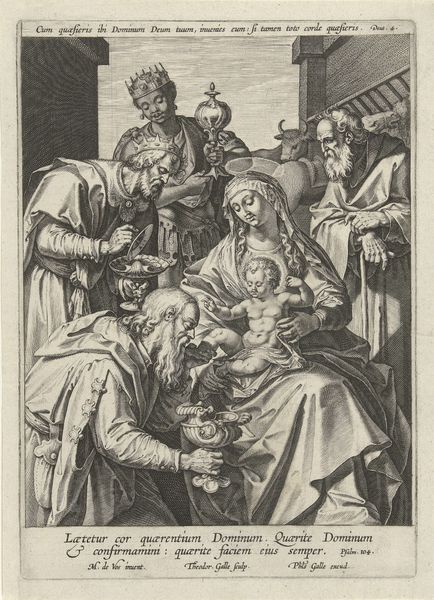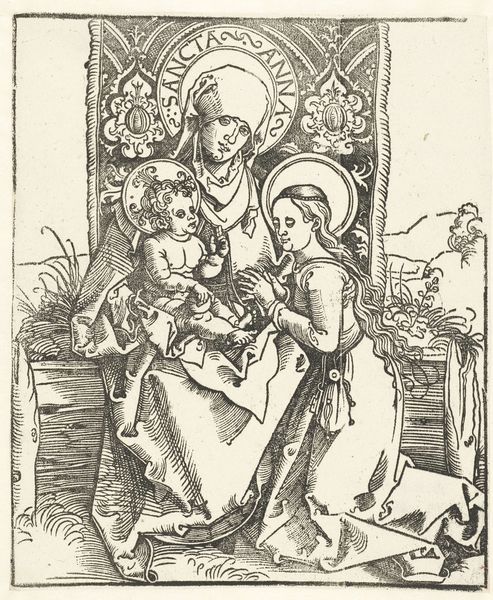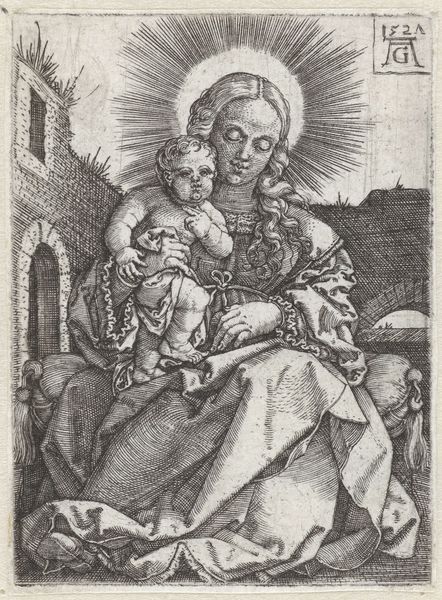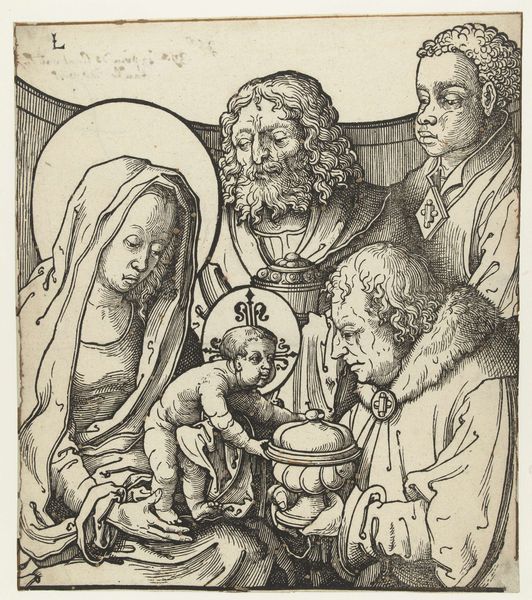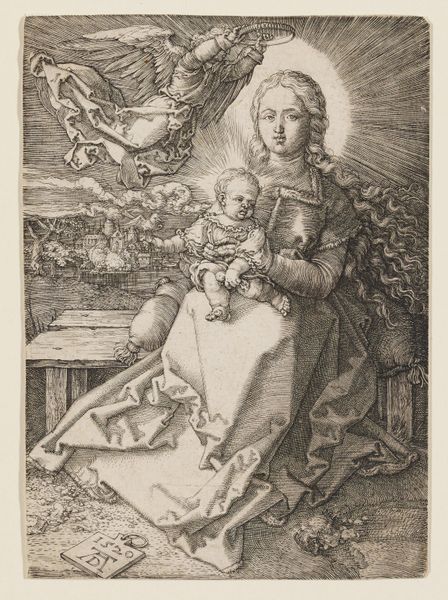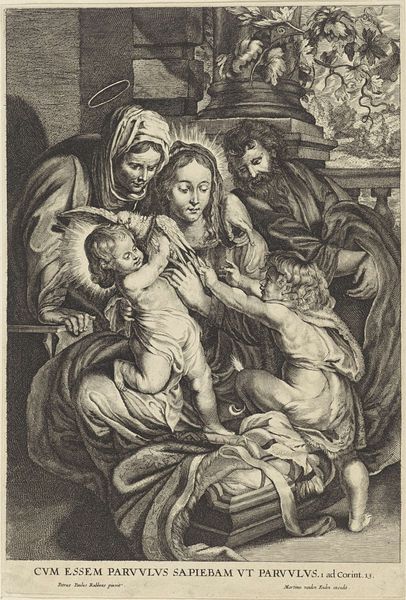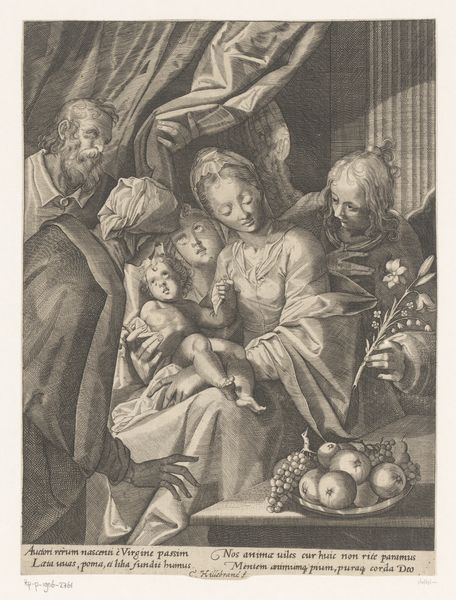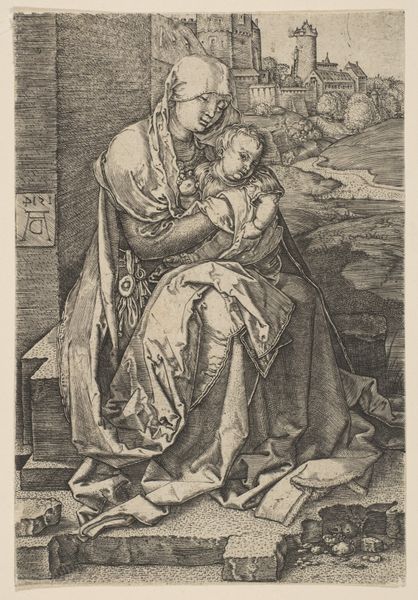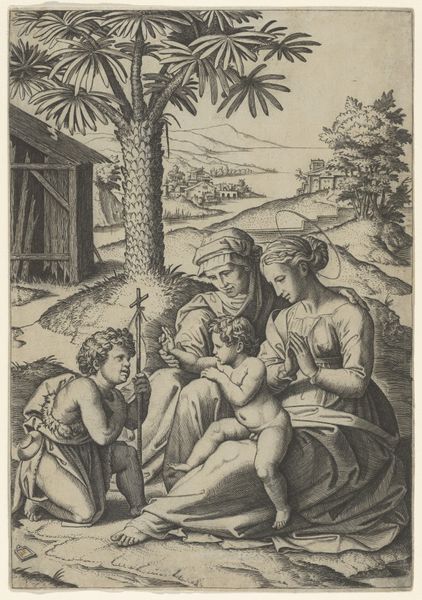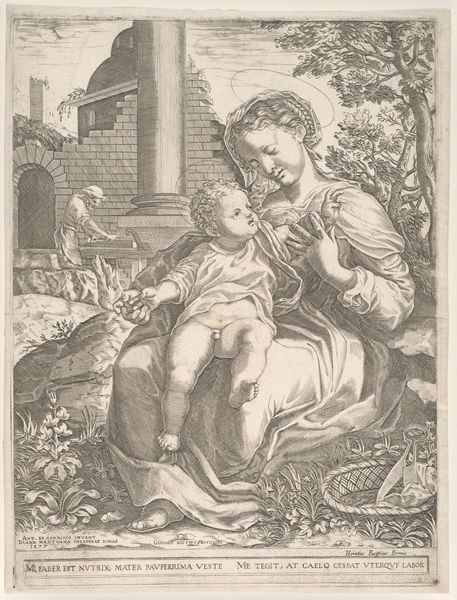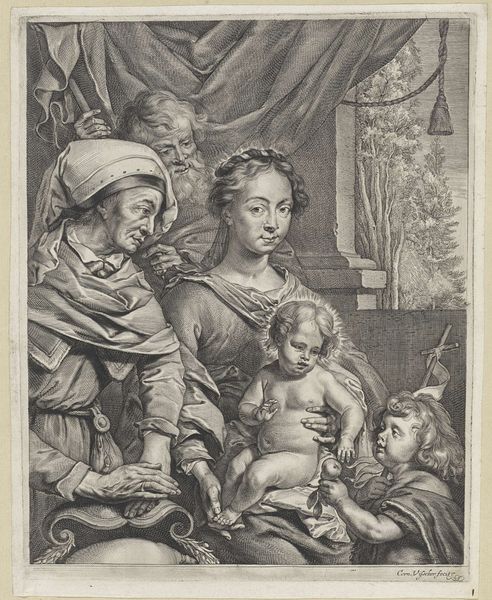
Frederick the Wise in Prayer before the Virgin and Child 1490 - 1553
0:00
0:00
drawing, print, engraving
#
portrait
#
drawing
# print
#
figuration
#
madonna
#
child
#
history-painting
#
northern-renaissance
#
engraving
Dimensions: sheet: 14 7/16 x 8 7/8 in. (36.6 x 22.6 cm)
Copyright: Public Domain
Editor: Here we have Lucas Cranach the Elder's engraving, "Frederick the Wise in Prayer before the Virgin and Child," dating roughly between 1490 and 1553. It’s a detailed black and white print depicting the Virgin Mary and infant Christ with a kneeling man. There's almost a humble, pious quality to it. What’s your take? How do you interpret this work in a broader historical sense? Curator: This engraving highlights the crucial role of patronage in the Northern Renaissance, doesn’t it? Frederick the Wise, a powerful Elector of Saxony, was a major supporter of artists like Cranach. We can view this as not just a devotional image but also a strategic act of self-presentation. Think about it: the act of being depicted in prayer next to the Madonna, for public consumption, cemented his piety and therefore his legitimacy as a leader, but it was only enabled by the technology of print. Do you think this engraving circulated widely? Editor: I would imagine it did, at least amongst certain circles! The printing press was gaining popularity…So the image really performs several functions then? Religious, but also political? Curator: Precisely. It’s also important to consider Cranach’s role within the Protestant Reformation. Luther’s reforms were protected by Frederick. The image exists in a unique moment, capturing both the religious devotion of the late medieval era, while suggesting the nascent influence of humanism on religious devotion. This tension is really indicative of the early Reformation’s own complex political role in the Holy Roman Empire. What would it mean if he commissioned similar images but without the Virgin and child? Editor: That really adds layers to it. So, it’s not just about personal devotion; it’s a public declaration interwoven with the complicated religious and political climate. A strategic PR move, almost! Curator: Exactly. And art became an integral component for the message to reach the public and to retain control and influence over his subjects. I find it compelling to think about who held and saw these prints during this specific time, what do you make of that? Editor: Understanding the interplay between faith, power, and artistic production makes me see this print in a totally different way. Curator: I am glad to have broadened your perspectives.
Comments
No comments
Be the first to comment and join the conversation on the ultimate creative platform.
